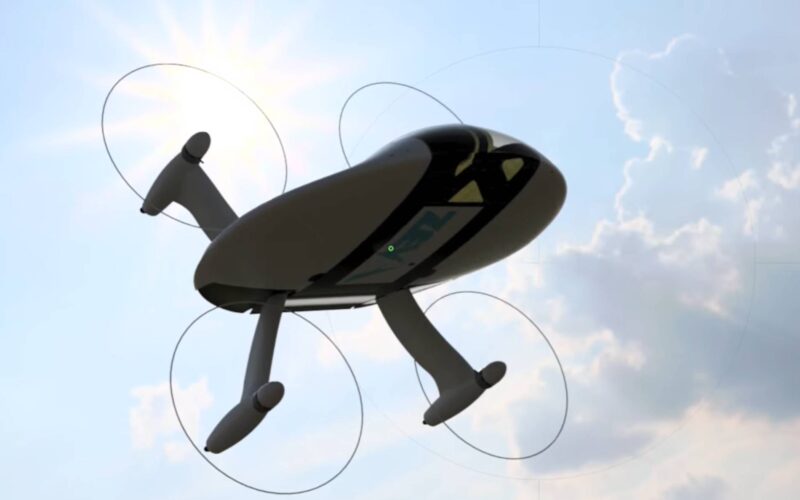The US-based eVTOL (electric vertical take-off and landing) company Zeva Aero presented a new aircraft, called the Z2.
An improvement upon the Zeva Zero – the company’s previous concept, presented in 2017 – the Z2 is expected to have a range of over 80 kilometers (50 miles) and a top speed of 257 kilometers per hour (160 miles per hour).
The most unusual feature of the design is Zeva’s signature round fuselage, which is supposed to provide lift in cruise flight, vastly improving efficiency in comparison with other eVTOL designs.
The company claims the aircraft is going to be optionally piloted, with the first prototype flying in mid-2023 and mass production starting a short while later.
Zeva is also working on a two-seat version and a docking bay that could see the Z2 attaching to the sides of buildings, adapting the type for better urban mobility.
An alternative design
Zeva Aero was founded in 2017 to participate in Boeing’s GoFly eVTOL competition, and conducted numerous tests on scale models.
A full-scale prototype of the Zero first flew in January 2022. Only the VTOL capability of the aircraft was tested, and the company did not reveal if it ever conducted a transition to horizontal flight.
According to the company, the design of the Zero was constrained by GoFly competition rules, and is no longer intended for mass production.
Meanwhile, the Z2 is designed to enter the eVTOL market, featuring larger propellers and a wider base, information on Zeva’s webpage reveals.
The company also explains that the body of the Z2 is going to be constructed of Kevlar and feature the latest in battery technology.
Unusual shape
The shape selected by Zeva for their aircraft differs greatly from usual designs of eVTOL aircraft that hardly stray far from helicopter-like appearance, even in the cases that feature a lifting body.
The company states that such a shape allows for an extremely small footprint, as their aircraft could land in the space required to park a single car.
The concept is not new: between the 1940s and 70s various countries experimented with similar designs for their military aircraft.
Called tailsitters, the aircraft like the Heinkel Lerche, Lockheed XFV-1 and SNECMA Coléoptère were intended as interceptors that could take off from unprepared and constrained locations.
They were ultimately unsuccessful, many of them suffering from control issues connected to their unusual design, as well as being generally inferior in their flight characteristics to conventional fighters.
According to Zeva, the Z2 is going to be heavily automated, just as many other modern eVTOL aircraft. This feature could alleviate the controllability problem, with advanced software ensuring smooth and safe landings – the procedure that proved to be the most challenging for earlier tailsitters.

